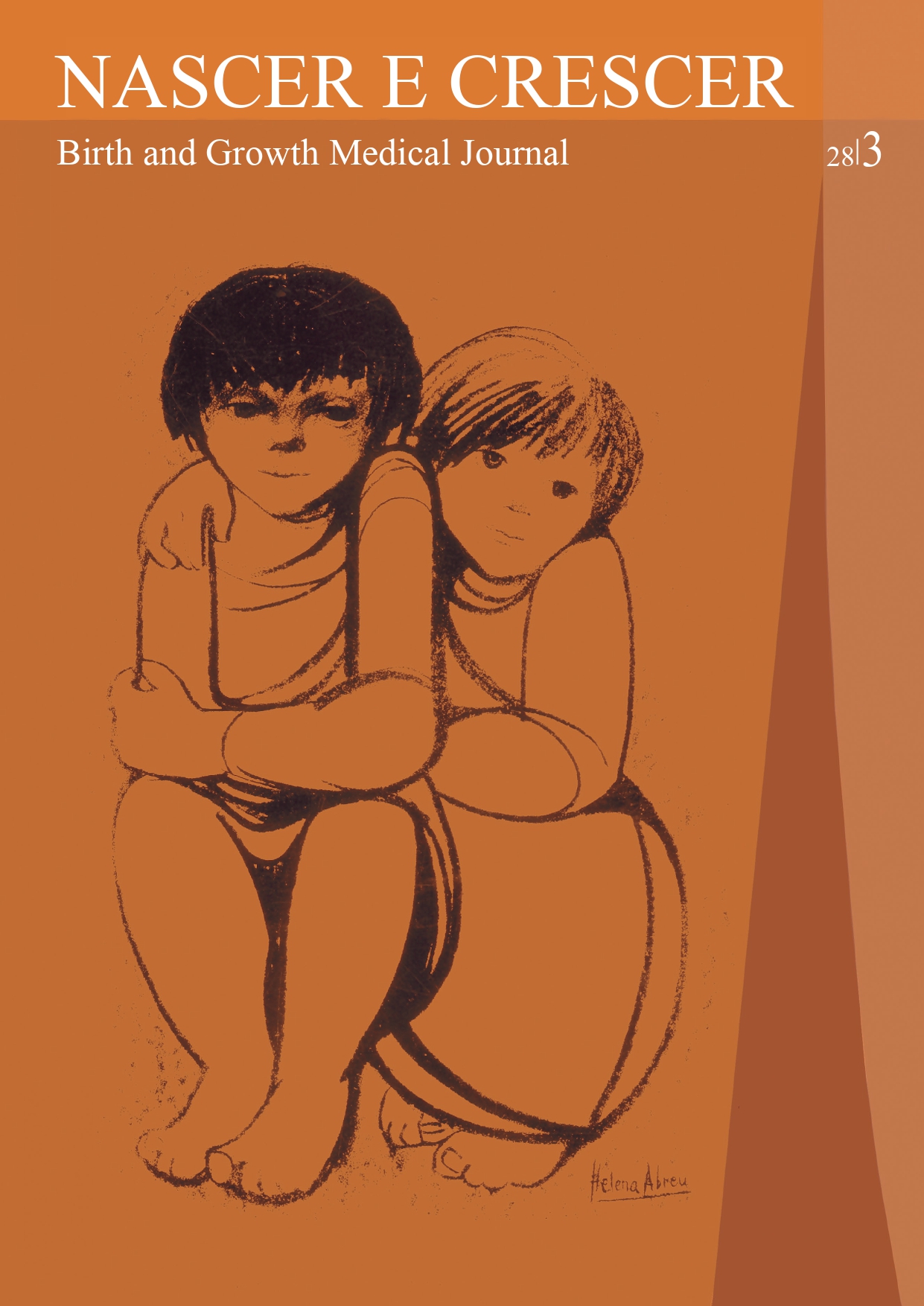Challenges of anorexia nervosa approach in austistic spectrum disorder patients
DOI:
https://doi.org/10.25753/BirthGrowthMJ.v28.i3.15066Keywords:
anorexia nervosa, autistic spectrum disorders, challenges approachAbstract
Introduction: Anorexia nervosa (AN) is an important cause of physical and psychosocial morbidity, typically develops in adolescence, and has a relatively common comorbidity with Autistic Spectrum Disorder (ASD). The clinical case of an adolescent with AN and ASD is presented, and its specific treatment challenges discussed.
Case Report: Female, 16 years old, with AN and a diagnosis of ASD since the age of two. Cognitive-behavioral therapy, motivational techniques, and family involvement were used, with some adaptations.
Discussion/Conclusions: Challenges were found which hampered treatment, such as rigid thinking patterns and routines, including very rigid rules around food. In clinical practice, it is important to be alert to this comorbidity with poor outcomes and no specific guidelines.
Downloads
References
2. Zipfel S, Giel KE, Bulik CM, Hay P, Schmidt U. Anorexia nervosa: aetiology, assessment, and treatment. The Lancet Psychiatry. 2015; 2:1099-111.
3. TEACCH® Autism Program. Available at: https://teacch.com/. Accessed July 2018.
4. Miller W, Rollnick S. Motivational interviewing: preparing people for change. 2nd ed. New York: The Guilford Press. 2002.
5. National Institute for Health and Care Excellence (NICE). 2017. Eating disorders: recognition and treatment. NICE Guideline, No. 69.
6. Huke V, Turk J, Saeidi S, Kent A, Morgan JF. Autism spectrum disorders in eating disorder populations: a systematic review. Eur Eat Disord Rev. 2013; 21:345-51.
7. Odent M. Autism and anorexia nervosa: two facets of the same disease? Medical Hypotheses. 2010; 75:79-81.
8. Westwood H, Mandy W, Tchanturia K. The association between symptoms of autism and neuropsychological performance in females with anorexia nervosa. Psychiatry Research. 2017; 258:531-7.
9. Kinnaird E, Norton C, Tchanturia K. Clinicians’ views on working with anorexia nervosa and autism spectrum disorder comorbidity: a qualitative study. BMC Psychiatry. 2017;17: 292.
10. Karjalainen L, Rastam M, Paulson-Karlsson G, Wentz E. (2018). Do autism spectrum disorder and anorexia nervosa have some eating disturbance in common? European child & Adolescent Psychiatry. 2019; 28: 69-78.
11. Westwood H, Tchanturia K. Autism Spectrum Disorder in Anorexia Nervosa: An Updated Literature Review. Curr Psychiatry Rep. 2017; 19:41.
12. Westwood H, Mandy W, Simic M, Tchanturia K. Assessing ASD in adolescent females with anorexia nervosa using clinical and developmental measures: a preliminary investigation. J Abnorm Child Psychol. 2018; 46:183-92.
Downloads
Published
How to Cite
Issue
Section
License
Copyright and Authors' Rights
All articles published in Nascer e Crescer - Birth and Growth Medical Journal are Open Access and comply with the requirements of funding agencies or academic institutions. For use by third parties, Nascer e Crescer - Birth and Growth Medical Journal adheres to the terms of the Creative Commons License "Attribution - Non-Commercial Use (CC-BY-NC)".
It is the author's responsibility to obtain permission to reproduce figures, tables, etc. from other publications.
Authors must submit a Conflict of Interest statement and an Authorship Form with the submission of the article. An e-mail will be sent to the corresponding author confirming receipt of the manuscript.
Authors are permitted to make their articles available in repositories at their home institutions, provided that they always indicate where the articles were published and adhere to the terms of the Creative Commons license.


